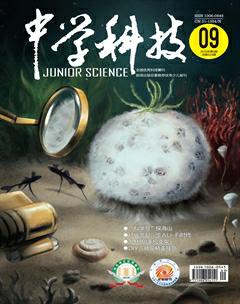A Whale of a Lifespan etc.

A Whale of a Lifespan
Scientists have mapped the genetic code of this long-lived whale species. The international effort found unusual features in the Arctic whale's genes. Those features likely protect the species against cancer and other problems related to old age. The researchers hope their findings will one day translate into ways to help people too.
No other mammal is known to live as long as the bowhead. Scientists have shown that some of these whales have lived well beyond 100 - including one that survived to 211. For perspective, if he were still alive, Abraham Lincoln would be turning just 206 this year.
A team from University of Liverpool wanted to understand how the bowhead can live so long. To probe this, the experts analyzed the animal's complete set of genetic instructions, called its genome. Those instructions are coded in the animals DNA. The team also compared the whale's genome to those of people, mice and cows.
The scientists discovered differences, including mutations, in the whale's genes. Those changes are linked to cancer, aging and cell growth. The results suggest that the whales are better than humans at repairing their DNA. Thats important because damaged or flawed DNA can lead to diseases, including some cancers.
Bowheads also are better at keeping abnormally dividing cells in check. Together, the changes appear to allow bowhead whales to live longer without developing age-related diseases such as cancer, say the scientists.
鲸的寿命
科学家已经绘制了长寿动物北极露脊鲸的基因密码图,各国研究者通过共同努力揭示了北极露脊鲸基因非同寻常的特征,这些特征很可能帮助该物种避免与老龄相关的癌症和其他疾病。研究者希望,有朝一日他们的发现能服务于人类。
目前已知,北极露脊鲸是哺乳动物中寿命最长的。科学研究证实,有些北极露脊鲸的寿命大大超过了100岁,其中一头活到了211岁。试想,亚伯拉罕·林肯如果在世的话,他今年也才206岁。
为了弄清北极露脊鲸的长寿秘诀,英国利物浦大学的一个研究团队分析了该动物的一整套遗传指令,即基因组,这些指令以编码的形式存在于动物的DNA中。研究团队还将鲸的基因组和人、老鼠、牛的基因组进行了对比。
这些科学家在鲸体内发现了一些有别于其他哺乳动物的差异,其中包括基因突变的差异。这些突变和癌症、衰老、细胞生长相关。研究表明:与人相比,鲸更擅长修复DNA。这一点至关重要,因为损坏的、有缺陷的DNA会引起包括癌症在内的疾病。
北极露脊鲸也更擅长控制细胞的异常分裂。科学家们说,综合各种因素,基因突变似乎是鲸不会罹患诸如癌症之类的老年疾病从而获得长寿的秘诀。
(注意斜体字的译法)
Are Our Schools Damaging Children's Eyes?
Over the last 30 years, short sight, or myopia, has become a global (A) h problem. The most dramatic (1) r has been in Singapore, Taiwan, China's (B) c and elsewhere in East Asia. Rates can be as high as 80-90 per cent among children leaving secondary schools in the region. As many as a fifth of them have severe myopia and so are at high risk of eye problems in later life. In Western countries rates are increasing, although not as rapidly as in East Asia.
The cause of myopia, and the means to prevent it, are unclear despite more than 150 years of scientific (C) r . Many theories have been put forward to explain why children's (2) e gets worse as they go through school. Too much close work is one of the more popular ones, while heredity is another. Both have been hotly debated down the years.
Myopia, scientists find, is a seasonal condition which seems to get worse in the winter. Recent research on myopia has revived an old theory from the 1890s, that (3) s children who spend more time outdoors have lower levels of myopia. Low ambient light(环境光线)levels rather than low vitamin D levels seem to be the deciding (4)f in myopia.
A century ago, it was widely believed that high (D) d levels in schools could prevent myopia. Education departments built classrooms with large windows to try to stop children becoming short-sighted. Then in 1960s, medical thinking changed. Myopia was thought to be an inherited condition, so less was done to prevent it. Today, it is known that children's education has a far greater (5) i on their sight than genetic factors. Evidence that daylight in classrooms prevents myopia is lacking. "It has not been investigated properly since the connection was first made in the 1860s," said the (E) a of this study Dr. Richard Hobday. "But, given the rapid increase in myopia among school children worldwide, this should be revisited."

